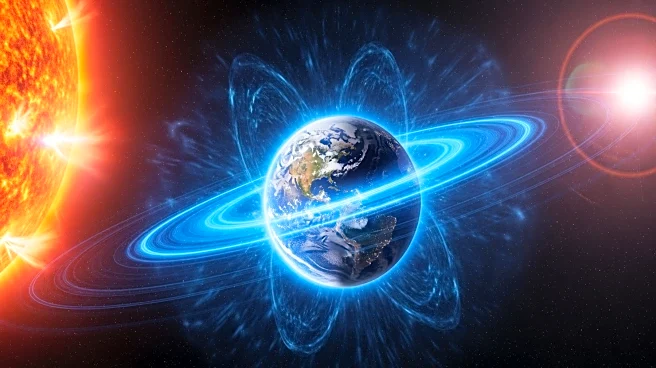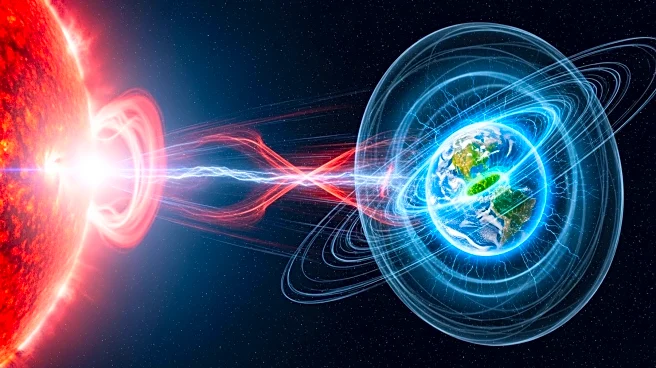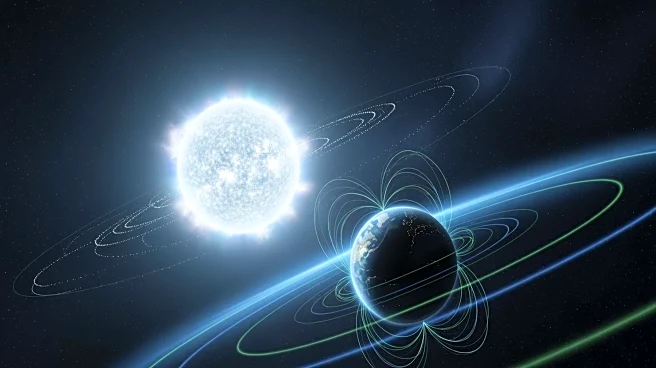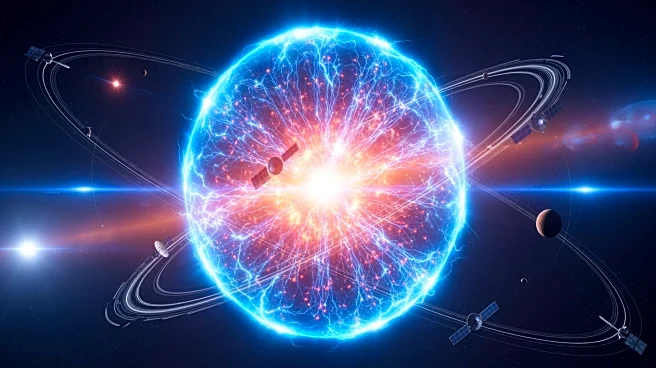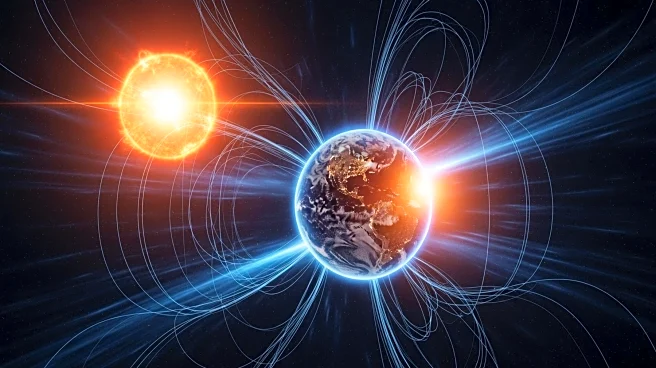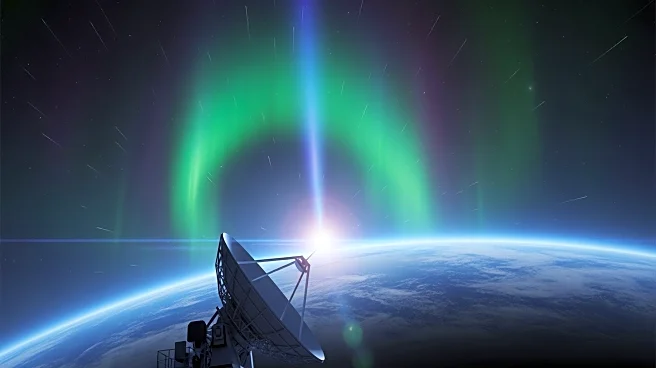What's Happening?
The Gannon solar superstorm, which occurred on May 10-11, 2024, has been identified as the strongest geomagnetic event in over two decades. Led by Dr. Atsuki Shinbori, researchers from Nagoya University
studied the storm's impact on Earth's plasmasphere, a region of charged particles that protects satellites and technology. The Arase satellite, launched by JAXA, captured the plasmasphere's severe compression and slow recovery, marking the first continuous data of such an event. The storm compressed the plasmasphere from 44,000 km to 9,600 km above Earth, affecting GPS accuracy and satellite operations.
Why It's Important?
Understanding the plasmasphere's response to extreme solar storms is crucial for predicting space weather impacts on technology. The Gannon storm disrupted satellite communications and GPS signals, highlighting vulnerabilities in space-based systems. Insights from this event can improve forecasting models and help protect critical infrastructure from future solar disturbances. The prolonged recovery of the plasmasphere underscores the need for robust space weather monitoring and mitigation strategies.
Beyond the Headlines
The Gannon storm pushed auroras to mid-latitude regions, a rare occurrence that demonstrates the storm's intensity. The phenomenon known as a negative storm slowed the plasmasphere's recovery by altering atmospheric chemistry, a link previously unobserved. These findings contribute to a deeper understanding of space weather dynamics and their implications for global communication and navigation systems.
